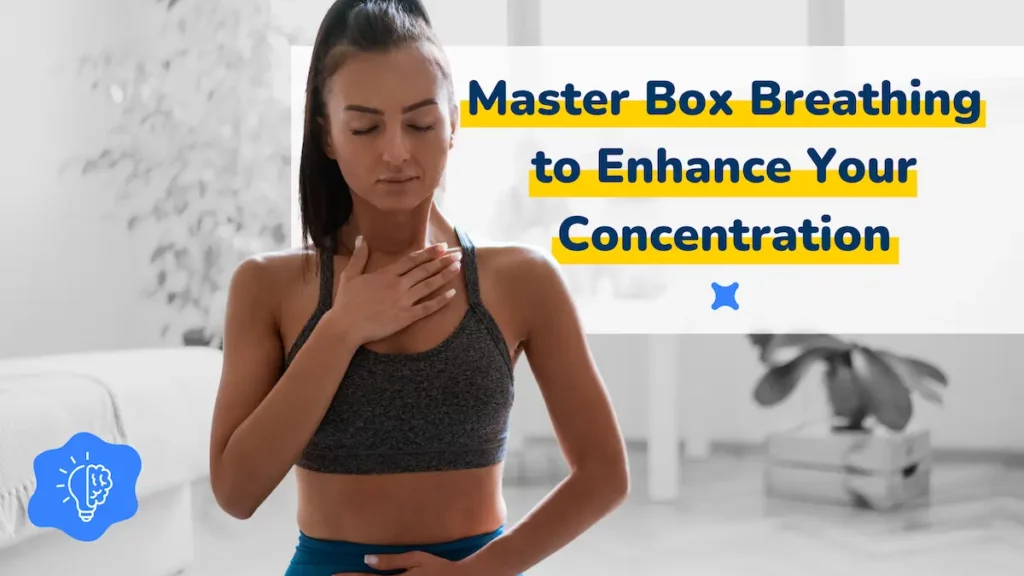Understanding the Science Behind Breathing and Concentration
Breathing isn’t just essential for survival; it plays a key role in regulating our mental state. Controlled breathing techniques can influence the autonomic nervous system, reducing stress and anxiety, thereby enhancing cognitive functions like concentration and focus. This will become incredibly important whenever we are under pressure, for example when we need to speak in public or solve a high-stakes problem.
The Physiology of Breathing
Breathing involves taking in oxygen and expelling carbon dioxide. This exchange affects brain oxygen levels, impacting our cognitive abilities. Controlled breathing helps maintain an optimal balance of oxygen and carbon dioxide, crucial for brain function.
How Breathing Affects the Brain
Breathing patterns can change brainwave activity. Slow, deep breathing encourages alpha brainwaves, which are linked to a calm, alert state—ideal for better concentration and mental clarity. Conversely, rapid, shallow breathing can increase beta waves, often associated with anxiety and scattered thoughts.
The Concentration-Boosting Breathing Technique: Box Breathing
The technique we’re focusing on is known as Box Breathing, or Square Breathing. This method is renowned for its ability to calm the mind and enhance concentration. Here’s how you can practise it:
Step-by-Step Guide to Box Breathing
- Find a Comfortable Position: Sit or lie down comfortably. Ensure your spine is straight and your body relaxed.
- Inhale: Breathe in slowly and deeply through your nose for a count of four, filling your lungs completely.
- Hold: Hold your breath for a count of four, allowing oxygen to distribute throughout your body.
- Exhale: Slowly exhale through your mouth for a count of four, emptying your lungs fully.
- Hold Again: Hold your breath for another count of four before starting the next cycle.
- Repeat: Continue this cycle for 5-10 minutes, gradually increasing the duration as you become more comfortable with the technique.
Benefits of Box Breathing
- Reduces Stress: By regulating the breath, this style of breathing activates the parasympathetic nervous system, reducing stress and promoting relaxation.
- Enhances Focus: The rhythmic pattern helps ground the mind, making it easier to maintain focus.
- Improves Cognitive Function: Regular practice can lead to better memory retention and decision-making.
- Promotes Emotional Stability: Helps manage anxiety and emotions, leading to a balanced mental state.
Integrating Box Breathing into Daily Life
To maximise the benefits, integrate box breathing into your daily routine. Here are some practical tips:
Morning Routine
Start your day with a session of box breathing. It sets a calm and focused tone, preparing your mind for the tasks ahead.
Mid-Day Breaks
Use box breathing during breaks to recharge and refocus. It’s especially effective during the afternoon slump when concentration levels typically dip.
Pre-Sleep Ritual
Incorporate box breathing into your bedtime routine. It helps wind down, reduce stress from the day, and promote better sleep quality.
Advanced Techniques and Variations
Once you’re comfortable with the basic technique, explore advanced variations to further enhance concentration and mental clarity.
Extended Counts
Gradually increase the count duration. Start with four seconds and move up to six or eight seconds per phase as your lung capacity and comfort level improve.
Visualisation
Combine it with visualisation. As you inhale, visualise a calming colour filling your body. As you exhale, imagine any stress or tension leaving your body.
Affirmations
Pair your breathing with positive affirmations. Mentally repeat a phrase like “I am calm and focused” during each cycle.
Mastering controlled breathing, specifically this style, can significantly enhance concentration and overall cognitive function. By understanding the science behind it and incorporating it into your daily routine, you can achieve a calmer, more focused mind. Start practising today and experience the profound benefits of this simple yet powerful technique.
By regularly adopting this breathing technique, you can transform your ability to concentrate, navigate daily challenges with ease, and maintain a balanced mental state.
FAQs
What is Box Breathing?
Box Breathing, also known as Square Breathing, is a powerful yet simple breathing technique that involves inhaling, holding, exhaling, and holding your breath again in equal counts, typically of four seconds each.
How will this improve concentration?
Box Breathing helps regulate the autonomic nervous system, reducing stress and anxiety, which are major barriers to concentration. It also promotes a calm and alert state by encouraging alpha brainwave activity.
Can I practise Box Breathing anywhere?
Yes, Box Breathing can be practised anywhere and anytime, whether you’re at home, at work, or even on the go. All you need is a few minutes and a comfortable position.
Is it safe for everyone?
Box Breathing is generally safe for most people. However, if you have any respiratory conditions or other health concerns, it’s always best to consult with a healthcare professional before starting any new breathing practice.
How often should I practise Box Breathing?
For optimal results, practice at least once a day. You can integrate it into your morning routine, use it during breaks, or include it in your pre-sleep ritual.
What are the long-term benefits of Box Breathing?
Regular practice of Box Breathing can lead to reduced stress levels, improved concentration, better cognitive function, and enhanced emotional stability. It’s a versatile tool for overall mental and physical well-being.
By incorporating Box Breathing into your daily routine, you’ll discover a powerful way to boost your concentration and manage stress, leading to a more focused, calm, and productive life.








